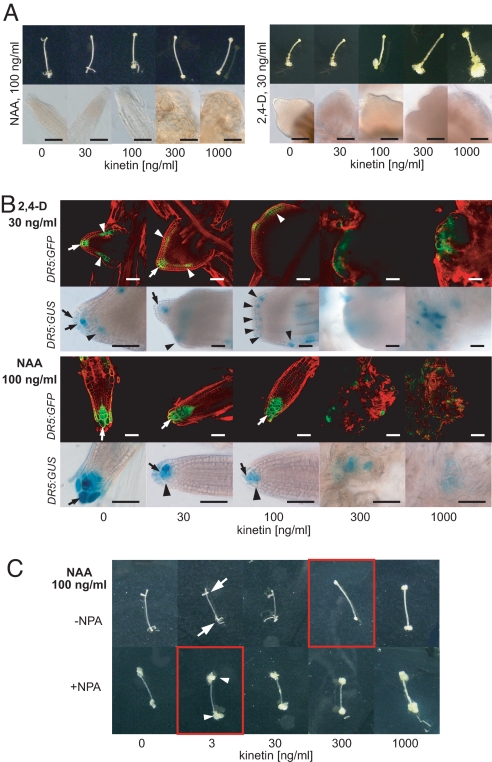Fig. 4.
CK has effects on auxin distribution during de novo organogenesis. (A) Phenotype of root-like organs after induction of organogenesis in hypocotyl explants either by NAA (Left) or 2,4-D (Right). Note the higher organization and patterning resembling Arabidopsis roots in the case of root-like organs induced by NAA. (Scale bar: 100 μm.) (B) Spatial pattern of auxin maxima as visualized by activity of DR5 on 2,4-D– (Upper) and NAA-induced organs (Lower). Note the formation of ectopic auxin maxima (arrowheads), their spreading and disorganization, and the more pronounced loss of the organ patterning and structure in the case of organs induced by 2,4-D. The auxin maxima are gradually less pronounced in case of NAA-induced root-like organs (arrowhead). Note the almost complete disappearance of DR5 maxima and loss of organ patterning at the CK threshold concentration [300 ng/mL (1.4 μM) kinetin]. Arrows depict the columella-like cells. (Scale bar: 50 μm.) (C) NPA (10 μM) partially mimics the effect of the CK threshold. Note the large amount of calli (arrowheads) formed even at the lowest kinetin concentration [3 ng/mL (14 nM)] in comparison to well-recognizable root-like organs at the same kinetin concentration in the absence of NPA (arrows); this resembles the effect of the CK threshold in the absence of NPA (compare figures in red frames). For details, see Fig. S3.

